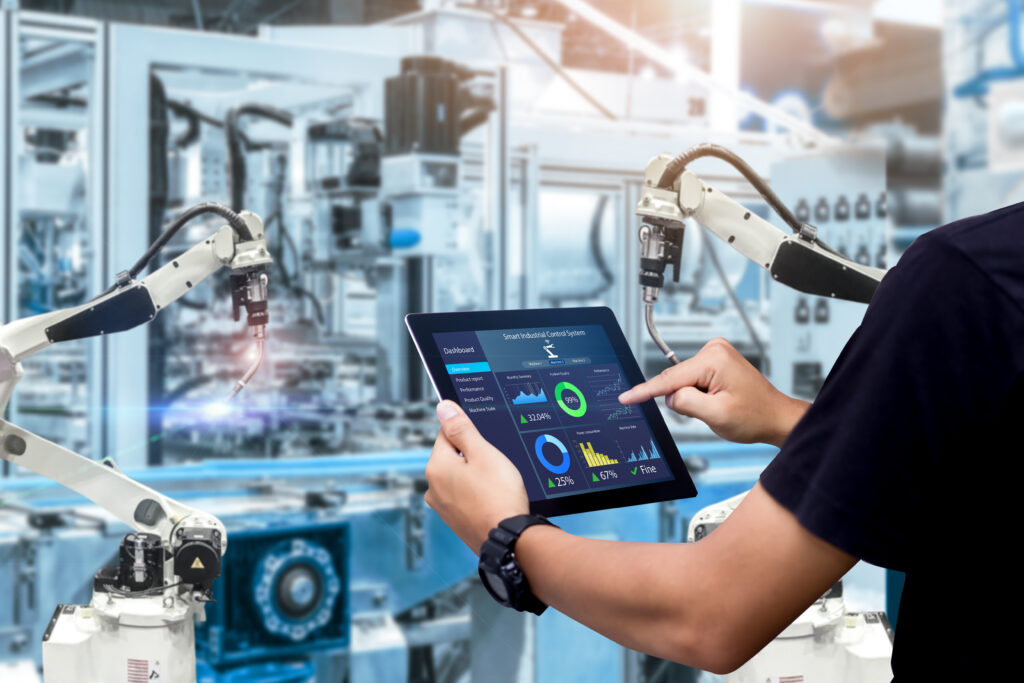Introduction
When we talk about productivity, the real competition between companies is not about who works more, but about who works better.
According to the McKinsey Global Institute (2017), approximately 60% of occupations worldwide have at least 30% of their activities that can be automated using available technologies. While less than 5% of occupations can be fully automated, a large portion of occupations contain repetitive and structured components that can be automated without completely changing the job.
We're not talking about replacing people, but about unlocking human potential. Repetitive, manual, and operational tasks still consume valuable time in areas such as Finance, Customer Service, and Back Office . Meanwhile, technologies such as RPA and artificial intelligence have evolved beyond basic automation: today, they are capable of learning, interpreting context, and acting autonomously.
What used to be about automating steps is now about automating decisions . And in this new scenario, understanding strategically integrate these technologies
In this article, we'll explore this new level of process automation and how Skyone Studio positions itself as a catalyst for this transformation, uniting data, AI, and execution in a single platform.
Enjoy the read!
Essential concepts: RPA, AI and process automation
When we talk about automation, many people still imagine robotic arms in factories or scripts that mimic computer clicks. But in today's corporate environment , automation has gone far beyond that and is increasingly connected to how data, decisions, and people interact .
More than replacing tasks, the focus today is rethinking how they happen . How do we integrate systems that don't communicate with each other? How do we ensure the right data arrives at the right time? How do we make workflows more intelligent and adaptable? The answer lies in the strategic combination of different technologies —and that's where we begin to build what we call "intelligent automation."
RPA ( Robotic Process Automation ) is often the first step. It automates repetitive digital tasks and generating reports, with speed, accuracy, and reliability. But its success depends on fixed rules and predictable paths.
Artificial intelligence ( AI) broadens this horizon. It interprets contexts, learns from patterns, and adjusts decisions based on data. With AI, we've gone from automating just the "how to do it" to also automating the "what to do," machine learning models come in , capable of identifying patterns in large volumes of data (including from sensors and IoT devices ) and making predictions that feed automated decisions in real time.
And in recent years, we've entered a new chapter with the arrival of generative AI . It not only analyzes but also creates responses, documents, content, and instructions, all based on natural language and user intent . It's what allows, for example, a chatbot to write personalized messages or a sales system to suggest proposals based on previous interactions. And that's just the beginning.
The most important thing is to understand that automation, RPA, AI, and generative AI are not isolated or competing technologies, but rather form a complementary ecosystem : RPA executes, AI analyzes, and generative AI creates. Together, they enable the automation of not just steps, but entire business decisions, with context, intelligence, and scale .
This potential, however, only materializes when there is structure behind it : well-organized data, fluid integrations, and clearly orchestrated processes. This is what we will explore next: the behind-the-scenes aspects that make automation truly intelligent and viable in companies' daily lives.
What's behind intelligent automation?
Before we talk about learning bots what underpins all of this "behind the scenes ." After all, no automation works properly if systems don't communicate with each other, if data is disorganized, or if the process flow doesn't make sense.
For automation to be truly intelligent, three pillars need to be well-structured : integration, data, and orchestration. And each of these pillars relies on specific technologies that enable the smooth and reliable operation of automated processes.
Integration: connecting systems that don't speak the same language
In our day-to-day corporate lives, we live with a veritable "technological patchwork": ERPs, CRMs, legacy systems, spreadsheets, APIs, service platforms... Without integration, each of these tools becomes an island , and processes become fragmented, full of rework and risk of error.
This is where iPaaS ( Integration Platform as a Service ) . It's a technology that allows you to connect different systems without reinventing the wheel . It acts as an integration layer between applications, allowing data to flow securely and automated commands to flow seamlessly between areas.
Furthermore, modern iPaaS solutions already support IoT devices and machine learning , enabling real-time integrations with sensors, predictive models, and advanced
data sources In Skyone , this pillar gains even more strength with native connectors and support for legacy systems, facilitating automation even in complex environments , without the need for development from scratch.
Data: Organizing What Fuels Automation
Automating without structured data is like building an engine without fuel. That's why, in addition to integration, it's essential to ensure the quality, availability, and governance of the information that feeds the flows .
This is where architectures like lakehouses , which combine the flexibility of data lakes with the analytical performance of data warehouses , and automated pipelines , which extract, transform, and deliver the right data, at the right time, to the right processes.
This framework can range from pipelines to continuous ETL flows and event streaming , ensuring that data movement occurs with monitoring, logic, and minimal latency.
But moving data isn't enough: it needs to be controlled. Therefore, robust version control, event tracking, tokenization, and governance come into play, ensuring that this data is used securely, contextually, and traceably. This is essential when it comes to reliable automated decision-making.
With this solid foundation , we no longer rely on manual spreadsheets and now operate with live, actionable data ready to drive faster, more strategic decisions.
Orchestration: giving logic, rhythm and control to processes
With integration and data in order, there is one piece missing to transform isolated actions into a coordinated operation : orchestration.
This layer defines what happens, when, in what order, and under what conditions . It allows you to map exceptions, predict failures, trigger alerts, and adapt the process in real time. With the support of low-code platforms , business areas gain autonomy to model flows, always with centralized governance by IT.
Another advantage of this layer is the ability to native monitoring and logging , ensuring traceability at each stage and creating a solid foundation for continuous process evolution.
With real-time monitoring and role -based ) capabilities, it's possible to ensure that each workflow is executed securely, transparently, and in compliance with corporate policies, even in regulated or highly critical environments .
With these three pillars firmly in place, automation gains scale, reliability, and, above all, intelligence . This is what transforms a set of automated tasks into an adaptive and strategic operation. And that's what we'll discuss in the next section, exploring the role of generative AI as the new brain of processes, capable of interpreting, creating, and acting based on context and intent.
Enterprise Generative AI: The New Brain of Automation
For a long time, automation was synonymous with execution : repetitive tasks, predictable routines, fixed rules. But everything began to change when technology stopped simply following instructions and began generating responses, interpreting contexts, and creating alternatives.
Ready-made connectors for ERPs, CRMs, legacy systems, APIs and IoT devices, eliminating barriers between applications and ensuring fluidity between events, data, and processes;
In practice, this means that a chatbot doesn't just answer frequently asked questions. It now composes personalized messages , understands intent, and suggests actions based on history. Another example: a sales co-pilot can generate follow -up emails based on a customer's previous behavior. Or, an automated financial flow can adapt its rules when it detects anomalies, without relying on new manual instructions from humans .
All of this is possible thanks to Large Language Models ( LLMs ) , trained with massive volumes of data and capable of interpreting natural language, recognizing patterns, and generating coherent content in real time. More than just language, these generative models are already used to create reports, summaries, technical instructions, service scripts, data visualizations, and even code, always based on contextualized input .
But the potential of generative AI is only realized when we combine it with a prepared ecosystem . Organized data, fluid integrations, efficient orchestration, and access control are prerequisites. The model only works well when there is governance, traceability, and adherence to business rules.
That's why platforms like Skyone Studio are gaining prominence. They provide the necessary environment for AI agents to truly operate with intelligence, autonomy, and security , transforming intentions into real actions, with a measurable impact on the business.
And this impact is already happening. In the next section, we'll show how RPA, AI, and generative AI are fitting into the day-to-day operations of companies, delivering real gains in efficiency, scale, and quality.
Where automation makes a difference: practical applications by area
Automating for the sake of automation doesn't get you far. True value emerges when technology fits organically into everyday workflows, resolving bottlenecks, reducing friction, and freeing up time for what really matters.
Below, we'll look at three areas where intelligent automation is no longer a trend, but a consolidated practice, always supported by robust integrations, structured data, and intelligent models, demonstrating that the results go far beyond productivity .
Backoffice and Finance
Few sectors accumulate as many critical and repetitive tasks as Finance. Bank reconciliations, tax validations, bill issuance, cash flow analysis: all these routines require surgical precision and, at the same time, take time away from strategic tasks .
With RPA , these tasks gain speed and reliability. With AI , workflows become adaptable: it's possible to cross-reference data from different sources, identify unusual patterns, and anticipate risks. Machine learning , for example, detect anomalous variations in real time, increasing control and predictability. And with generative AI , management reports and performance analyses begin to emerge automatically, with insights ready for decision-making.
According to McKinsey 2016–17 ), companies that adopt RPA can achieve ROI between 30% and 200% in the first year , with cases reporting up to 200% in initial implementations . The result? Less time closing the month, more focus on predictive analytics, planning, and decisions that drive growth.
Customer Service and Support
Everyone has experienced the frustration of repeating the same information three times in a row. And it's exactly this kind of noise that well-implemented automation can eliminate, without sacrificing human empathy .
With RPA , tasks such as opening calls, updating protocols, and sending confirmations are performed automatically and in a standardized AI then steps in to understand the context of the request, analyze customer history, and direct service more precisely. And with generative AI , bots go beyond simply responding and begin writing personalized messages, suggesting solutions, and learning from each new interaction, always fed by organized and integrated data via pipelines .
Gartner 's forecast (March 2025), autonomous AI agents should resolve up to 80% of customer service cases by 2029 , resulting in a reduction of approximately 30% in operational costs. In practice, this translates into more fluid journeys, greater customer satisfaction, and a team focused on what truly requires active listening and human reasoning.
Marketing , Sales and Operations
In these areas, rhythm is everything. And automation comes in to synchronize movements between teams, data, and channels , without wasting time on what can be automated.
With RPA , it's possible to automate tasks such as lead registration, sending communications, and system updates. AI helps predict behaviors, score opportunities, and recommend next steps based on real data. And generative AI closes this cycle with personalized deliveries at scale: proposals, emails , presentations, and even sales
scripts According to McKinsey , companies that automate processes in these areas increase revenue by up to 10% and reduce operating costs by up to 20% . The effect of this investment is direct: a business cycle that flows with more strategy, less friction, and with teams focused on what truly generates value.
Other areas in transformation
Intelligent automation is also gaining ground in sectors such as Human Resources , with automated resume screening, sending of admissions communications, and data integration between payroll and talent management systems.
In Logistics and Purchasing , workflows such as order validation, inventory updates, and supplier negotiations can be optimized with RPA and AI. And in IT , automation streamlines everything from access provisioning to incident response.
These examples make it clear: automation is already part of everyday life in critical and strategic areas, bringing concrete gains in productivity, quality, and scale , always with data flowing between systems through integrated architectures and well-orchestrated pipelines.
But that doesn't mean the path is simple or free of obstacles. Implementing truly intelligent automation involves technical decisions, cultural changes, and often overcoming silos and internal resistance.
Therefore, below, we'll address the main challenges companies face on this journey and how to overcome them with strategy, structure, and the right partner.
Main challenges of automation: what are they and how to overcome them?
Like any journey, intelligent automation also has its challenges. But with a strategic approach and the right technology, every challenge can be transformed into an opportunity for growth .
Below, we highlight some of the most common scenarios faced by companies at different stages of automation, along with clear paths to move forward with confidence:
- Disconnected environments : It's common to find companies with systems that don't communicate with each other, making it difficult to create integrated automated workflows. Solutions like iPaaS platforms help connect these dots without relying on complex development processes;
- Starting without a clear direction : Starting to automate can raise questions: where to begin? Ideally, focus on high-volume processes with a direct impact on the business and a predictable structure, and then expand based on what you learn.
- Unstructured data and poor data culture : Data is the foundation of automation. When it's scattered or inconsistent, the process loses efficiency. Structures like lakehouses and pipelines help ensure the right information arrives at the right time, reliably. Furthermore, it's essential to promote data literacy within teams, building trust in live, accessible, and traceable data.
- Under-engaged teams : Automation isn't just about technology, it's about people. Involving teams from the start, demonstrating practical gains in day-to-day operations, and creating space for co-creation strengthens a culture of innovation. And here, again, data culture plays a central role: teams prepared to interpret and trust information begin to operate with greater autonomy and precision.
- Data governance and : Automated workflows require strict access control, traceability, and compliance with internal and regulatory policies. Platforms with features like role-based access control (RBAC), logging , and continuous monitoring help ensure these requirements are present from the automation's inception;
- Technology not aligned with the business : Automation needs to make sense for the company's context and objectives. Uniting technical and business areas from the outset, and adopting platforms that enable autonomy without sacrificing governance, ensures the solution is functional and scalable.
The good news is that these points aren't insurmountable barriers. Rather, they're milestones in a healthy transition toward a smarter operation . And each of them can be overcome more smoothly with a platform designed to simplify and enhance this journey, like Skyone Studio . Keep reading to find out!
Skyone Studio: Data, AI, and Automation in a Single Platform
As we've seen so far, true automation isn't just about automating tasks. It's about transforming decisions into actions , safely, intelligently, and contextually. With this vision in mind, we created Skyone Studio : a platform that unites data, AI, and orchestration in a single environment, ready to put artificial intelligence into motion.
More than integrating technologies, Skyone Studio connects the dots between intention and execution , offering everything a smart operation needs to scale with control, fluidity, and real impact.
How Skyone Studio Enables Real AI Agents
Many still view AI as an assistant that answers questions. At Skyone Studio , AI goes beyond that : it acts as an agent capable of executing, interacting with systems, making decisions based on live data, and following business rules with full traceability.
This is possible because our platform combines, in a unified architecture :
- Ready-made connectors for ERPs, CRMs, legacy systems, APIs and IoT devices, eliminating barriers between applications and ensuring fluidity between events, data, and processes;
- Execution of pipelines that transform data into actions with tracking, tokenization, and reliability;
- Low-code visual orchestration , with customizable business logic, role-based access control (RBAC) and real-time monitoring for each executed flow;
- Security and governance are premises, not add-ons. Skyone Studio features logging token management , and adherence to corporate policies from the start.
In practice, this means that an AI agent can, for example, identify a cash flow anomaly, query multiple systems, write a recommendation, and take action—all based on up-to-date data and business context.
In other words, with our platform, AI stops just suggesting and starts doing , with traceability, control and governance at every stage.
If you're looking for more than just one-off automation, but rather truly intelligent operation, here's what makes Skyone Studio a unique platform :
- AI agents ready to execute, not just suggest;
- Native connectors and legacy system support to integrate everything seamlessly;
- Low-code visual orchestration , with built-in IT governance;
- Supervised and traceable data pipelines
- End-to-end enterprise security, with logging , RBAC, and compliance from the start;
- Unified environment for data, AI and automation, with real scalability;
- Generative applications integrated into processes, with a direct impact on areas such as Finance, Service and Sales.
Want to understand how to apply this in practice? Talk to one of our experts and see how Skyone Studio can accelerate intelligent automation in your business!
Conclusion
Automation has gone from being a differentiator to a new business language . And only those who master the behind-the-scenes aspects of automation can speak this language fluently: reliable data, well-orchestrated workflows, and artificial intelligence connected to the operational reality.
In this article, we show that RPA and AI don't work alone . And that when combined with an intelligent, governed architecture, they transform into a new way of working—much more strategic, more fluid, and more efficient .
Here at Skyone, we've translated this vision into Skyone Studio, a platform that not only automates tasks but also makes intelligence truly happen . From data to decisions, from rules to outcomes, Skyone Studio organizes everything in a single environment, with agents ready to act and create real value.
If you enjoyed this content, why not delve even deeper into the power of AI in business? Read our article "What are LLMs and how to apply them to your business with your own data?" After all, the future is already happening, and understanding LLMs means understanding the next productivity revolution!
FAQ: Frequently asked questions about process automation
Even with so much information available, there are still many questions surrounding process automation. This is because the topic has evolved: it's gone from being a simple task replacement to a business strategy based on data, AI, and integration.
Below, we answer the main questions directly and practically for those starting out or looking to go further.
What is process automation?
Process automation is the use of technologies to perform repetitive tasks, operational routines and business decisions in an automated manner, with minimal or no human intervention.
But in practice, it goes far beyond "doing things faster." Intelligent automation involves connecting systems, organizing data, applying artificial intelligence, and orchestrating workflows with logic and traceability. The goal is to achieve scale, free up time for strategic work, and improve the experience for teams and customers.
How to automate processes?
Automating a process starts with mapping: understanding where the bottlenecks, manual tasks, and high-volume or high-impact flows are.
Next, you need to ensure three key elements:
- Integration between systems and data;
- Structured, available and governed data;
- Orchestration to provide logic and control to flows.
This makes it possible to apply technologies like RPA ( Robotic Process Automation ) to perform repetitive tasks; artificial intelligence (AI) to interpret and make decisions based on data; and generative AI to create content, responses, and decisions in real time. Platforms like Skyone Studio facilitate this journey by unifying all these steps in a single environment.
What is programmable automation?
Programmable automation is based on fixed rules, predefined paths, and clear instructions—common in traditional RPA ( Robotic Process Automation ) tools. It's effective for repetitive and predictable tasks, such as issuing invoices or updating spreadsheets.
But to deal with more complex and variable scenarios, companies are migrating to intelligent automation, which combines artificial intelligence (AI), contextual data, and adaptive business logic. This leap forward allows them to automate not only the "how to do it" but also the "what to do" with greater agility, scale, and intelligence.





